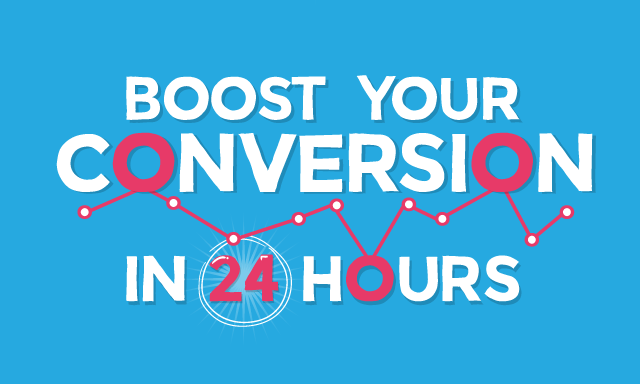Desperate to improve conversion? Then we've got a list of different ways you can boost website...
If you want to get the absolute most out of your marketing efforts to drive optimal results, then you don’t need to choose between Inbound Marketing or Growth Driven Design (GDD). Luckily for marketers all over the globe, using both GDD and Inbound Marketing makes our lives much easier, and marketing efforts much more effective and efficient. Here’s how to use both to your advantage - as well as HubSpot to tie it all together.

Perhaps the simplest way to explain why both GDD and Inbound Marketing are the perfect match is because of the end goal. It’s all about converting visitors into leads, customers and then promoters - it’s just that GDD does it all based on a website that’s constantly being improved. Even then, it can use plenty of Inbound Marketing tools to achieve those results.
Benefits of Inbound Marketing
- It’s cost-effective.
- It’s long lasting.
- It’s immediate.
- You can build authority and raise brand awareness.
- You can reach new markets and audiences.
- You’ll always create relevant content for your audience.
- You become a source of useful information.
- You can engage every relevant persona.
- You become part of an evergreen buying cycle.
Benefits of GDD
- Can launch websites 50 percent faster than traditional web design.
- GDD websites are 50 percent cheaper compared to traditional web design.
- Don’t miss deadlines or go over budget.
- No guesswork involved as you measure, learn and optimise your website based on real data.
- You have complete power to change and tweak any section of your website.
- It’s a money-saver.
- You never have an outdated website.
- You get a return on investment compared to traditional web design.
How do They Work Hand in Hand?
Can you succeed by solely relying on Inbound Marketing? Yes. Can you just focus on GDD and put all of your focus towards creating a brand new website? Not so much.
If you think about it a little deeper, Inbound Marketing features all of the crucial elements that it takes to attract users towards your website.
On the flip side, GDD is busy dealing will all of the heavy mechanics behind the scenes that help make your users as loyal as possible by making them return. So, you’d need to implement Inbound Marketing elements towards your GDD strategy.
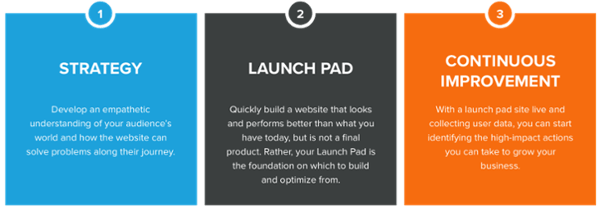 GDD Methodology
GDD Methodology
What this shows is that they both do need each other to succeed when it comes to achieving marketing goals.
Another simple way to understand it easier is by breaking down the Inbound Methodology and realising that GDD fits in practically at every stage.
ATTRACT
You’re creating a strategy that will help drive traffic to your new website. By now, you’ll know what’s included in the strategy phase of GDD before you launch that all-important launch pad website. So, you’re going to know the elements to include to attract visitors by making fundamental assumptions and analysing data.
CONVERT
Now, it’s all about implementing GDD to optimise conversions on your website. This then results in you generating more leads. It also happens to be the perfect time to see how your website is being used, the troubles your users have faced so far and things you can add or remove that will close even more leads.
CLOSE
At this stage of the Inbound Methodology, the focus falls on nurturing those leads and converting them into customers. GDD is all about analysing data and implementing changes based on the results of that data. Here, you can implement necessary changes after prioritising your wishlist by adding features you believe users want from the website to turn them from users into repeat customers.
DELIGHT
You’ve made the changes. You know what the users liked and by analysing their journey, you know what works as customer satisfaction leads to repeat and new customers. While the focus turns to those customers becoming promoters, it’s the perfect opportunity to continuously improve the website to implement new and effective changes based on that data and how much value they will add.
Another big way in which both GDD and Inbound Marketing work really well together is when it’s time to create a sitemap for Inbound success. An Inbound-focused sitemap needs to be optimised for SEO so that the search engines can follow the links to every webpage without missing anything out.
You could argue that both Inbound Marketing and GDD are very similar throughout the entire process.
Think of Inbound Marketing’s blueprint stage as GDD’s strategy phase. It’s where all of the planning goes on, you take out the guesswork by thoroughly researching exactly what the prospect’s goals are, their pain points, buying habits and more. Inbound Marketing can deliver a campaign to resonate and GDD can begin to launch a website to resonate.
Inbound Marketing then builds the platform by mapping out and setting up all of the required technology to underpin the campaigns. In GDD, the launch pad website is made live so the analysis can begin for the final stage to see where improvements can be made.
Finally, Inbound Marketers can deliver campaigns in 90-day cycles after analysing results and focusing on which aspects bring the best results. GDD is pretty much identical in the continuous improvement phase. All of the data is analysed so that necessary changes can be made to the website which adds value to the user and helps increase revenue.
It’s clear to see that they’re designed to work side by side to get the best results.
How Else do They Help Each Other?
Improve Your Buyer’s Journey
Businesses that are failing to generate a suitable amount of web traffic towards their website perhaps don’t have a thorough understanding of their buyer’s journey. Either that, or it could be very outdated where the buyer’s journey needs to be changed - and that’s not an issue when you combine GDD with Inbound Marketing.
By combining these methods, you’re able to rely on website metrics to understand the conversion pathways which are turning visitors into customers, or even what’s turning them away.
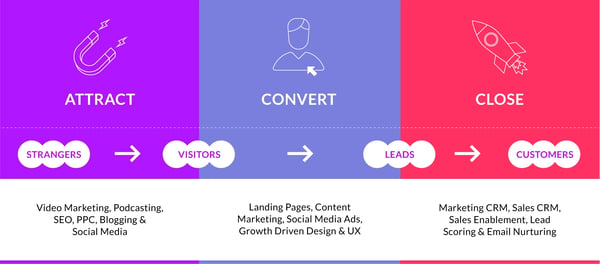 Buyers Journey
Buyers Journey
Not only that, but user behaviour can also have an impact on your buyer’s journey information too. So, you can understand the ‘sticking points’ in the buyer’s journey and remove anything that’s causing friction. This allows you to always refine your content as you develop a much better and thorough understanding of your buyer’s journey.
Improve Conversion Gateways
An analysis of your buyer’s journey does play an integral role towards improving conversion rates. However, not every piece of technology can support testing methods like A/B testing, so lead generation efforts can feel like guesswork.
By improving your landing pages, CTAs, thank you pages and any other conversion gateways you can think of, you’re able to test using the GDD method to see which gateways are the most statistically effective. Once you have the results, you can implement the forms of conversion gateways throughout the website.
By always testing, implementing the changes and re-testing, you’re always able to optimise with the ideal customer and persona in mind. Inbound Marketing is all about staying ahead of the curve and finding new ways to drive results, so it works perfectly with GDD to meet the fast-changing preferences of the customers.
Fix Issues Rapidly
It’s only natural that your marketers are going to find some bottlenecks as a GDD website is launched. The difference is that with a traditional method, they probably can’t go in and make any changes until there’s a complete redesign.
This is where GDD is hugely beneficial as it allows marketers to quickly implement changes to fix any sticking points. It means they’re not stuck with hurdles for months on end and with no design experience needed, any marketer can go in and fix issues.
As we highlighted above, you can’t remain stagnant in the world of Inbound Marketing. So, having a useful method like GDD to stay on top of any errors or changes shows exactly how marketers can stay proactive.
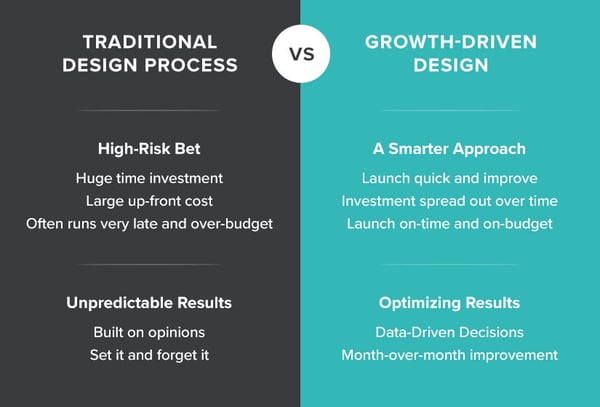 Traditional Wed Design vs. Growth Driven Design
Traditional Wed Design vs. Growth Driven Design
Using both Inbound Marketing and GDD ensures that you’re not stuck with failure for long. Both of the principles move so fast but they also provide solutions that allow you to innovate to win very quickly. By applying the data you find, you’re able to always improve - and that’s where HubSpot can help massively.
How HubSpot Can Help
We know what you’re thinking. First, there’s Inbound Marketing, then GDD and now an entirely different platform to get to grips with. That’s not the case. If anything, HubSpot is the platform that ties both of those principles together to make your life that much easier.
For both Inbound Marketing and GDD, you need an effective Content Management System (CMS). Without a CMS that has the sufficient tools to grow, you won’t be able to achieve GDD or Inbound Marketing goals in the long-run. The important thing to consider is that a CMS can’t be entirely focused on one or the other - it needs to benefit your entire team and the HubSpot CMS is one of the most effective systems around.
Some of the growth tools that are built into the CMS which leverage user data in unique ways include:
User Engagement Timeline
You can see how all of your contacts are engaging and interacting with your website. With this tool, you gain a deeper understanding of your users so that you’re able to make much better decisions by seeing exactly how every user is interacting with your content. You can also leverage integrations to see just how engaged your users are.
Personalising for your Visitors
We know by now that every visitor is different, so your website shouldn’t adopt a one-size-fits-all approach. You’re able to create a personalised website experience for specific visitor behaviours, segments and even personas. HubSpot Smart Content allows you to personalise based on any field within your contact database along with conditions such as device and location.
HubSpot Forms
GDD is all about collecting data and user feedback to help inform decisions and boost your results. Using a tool like HubSpot Forms lets you effortlessly convert anonymous website visitors into leads with some powerful online forms with progressive profiling and smart field. Plus, you don’t really need technical experience.
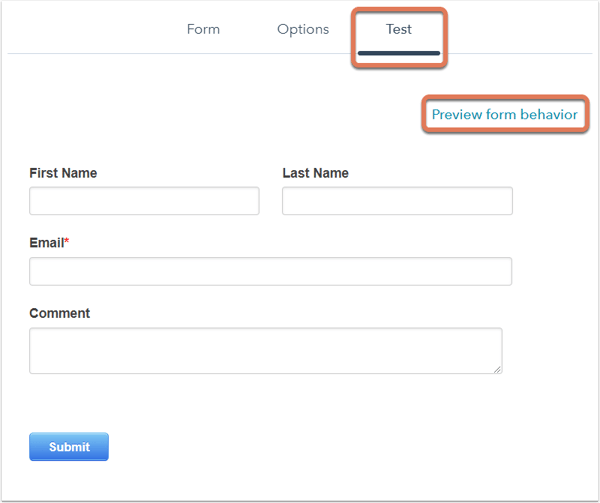 HubSpot Form Test Preview
HubSpot Form Test Preview
Website Platform
Rather than focusing on updates and maintenance of your website, the Website Platform tool lets you focus on improving results instead. HubSpot’s Website Platform tool is built to allow you to spend time making improvements to your website rather than wasting valuable time updating the plugins.
Automation Tools
HubSpot’s Automation Tools allow you to build a sticky website that keeps bringing your visitors back. The automation tools help to continuously drive and engage visitors to come back to your website again.
Attribution and Event Reporting
This tool lets you track all of your key metrics from the same platform. This means you can shorten the Growth-Driven Design feedback loop and improve your marketing as a whole. This is accomplished by learning which pages or custom events are contributing towards revenue and conversion - and which aren’t.
These are only some of the data-driven tools that HubSpot’s CMS provides to make it the perfect platform for GDD. Some others include:
- Landing Page Creation Tool
- Blogging Tool
- On-page SEO Tool
- Web Analytics
- Reporting
- Content Strategy Planning Tool
- Lead Flows
The point of any website you create will surely be to either raise awareness, convert leads and even boost revenue. It’s clear to see how the tools above can help when ditching the traditional method and adopting the HubSpot CMS for the GDD approach for your Inbound Marketing efforts.
Other Tools You Could Use
Although you need things like the right certifications, up-to-date buyer personas and even the right number of visitors to implement GDD, there are still a handful of other tools you can implement to drive better results.
The easiest way to decide on which tools you’re going to use is to break it down into sub-sections and select the tools from each category. Some of the tools we recommend are below:
Team Collaboration
- GDD Dashboard
- Slack
- Google Docs/Shared Google Drive
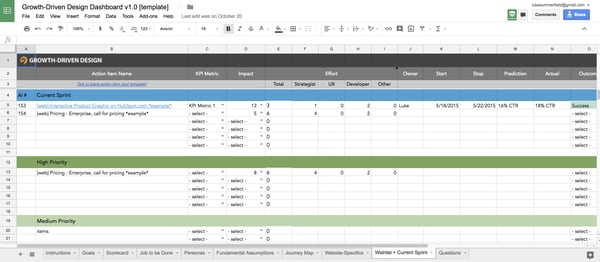 GDD Dashboard
GDD Dashboard
Content Management System
- HubSpot CMS
Project Management System
- Asana
- Jira
- Basecamp
- Accelo
User Research and Testing
- Hotjar
- Google Analytics
- Lucky Orange
- Zoom
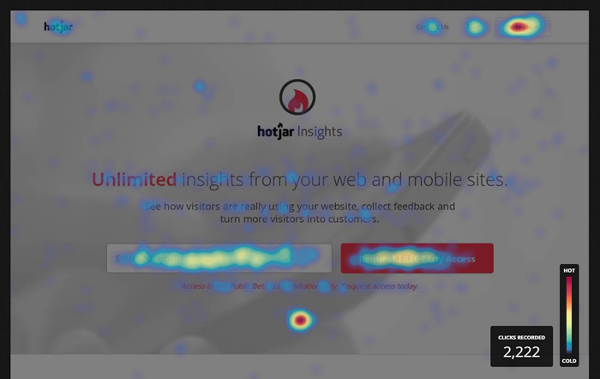 Hotjar Heatmap
Hotjar Heatmap
Experimentation
- A/B Testing
- Google Analytics
Although the HubSpot CMS and GDD can boost your Inbound Marketing efforts, it doesn’t need to end there. Don’t make the mistake of spending your valuable budget on every single tool you can find. Instead, do your research on which ones fit your company goals and purchase the ones that are the best solution for overall company growth.
Take a Deeper Dive into the World of Growth Driven Design
GDD is now seen as the smarter and newer approach to website design. While it can seem a daunting prospect to get involved in, it doesn’t need to be and the statistics are there to prove that it truly is the best way to drive optimal results for your new website as part of your Inbound Marketing strategy.
To help you gain a much better understanding of GDD, how it works and what you need to get started, we’ve created an in-depth helpful guide.

